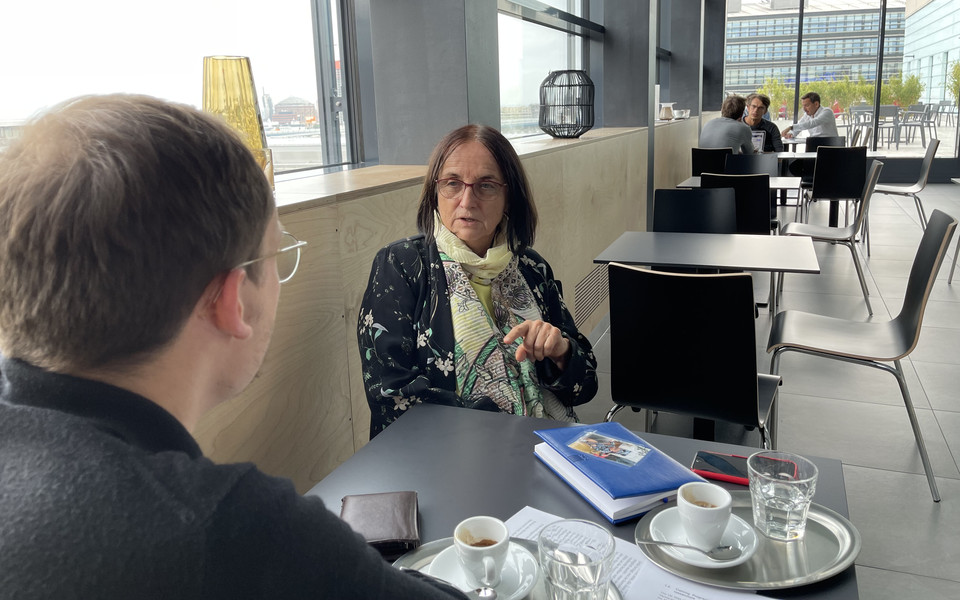
After 13 years, the RNA DK now celebrates with a final closing conference. Looking back, what was the biggest highlight for you?
This is easy to answer, because we had Emmanuelle Charpentier in our faculty at the beginning. Her Nobel Prize for the co-discovery of the CRISPR/Cas9 system in 2020 was the absolute highlight. One of her PhD students, Krzysztof Chylinski, who was responsible for many results which then led to the famous publications about CRISPR/Cas9, was part of our program. Over the years, many of our faculty members were promoted and many students started their careers in our school. Overall, I am very happy that we had so many talented students and group leaders who contributed to the exciting research being done in this DK. Our scientists have elucidated the mechanism by which piRNAs silence transposons and discovered how RNAs influence the pathogenicity of bacteria, just to name one or two scientific highlights.
Why is it important to train PhD students in such a thematic framework with groups that are really interested in one topic?
When you look back at the development of PhD programs, especially in Austria, in earlier times PhD students were working closely with their PI but never had contact with any other faculty members or colleagues. If students ran into problems, or they wanted to discuss something, they only had their PI to talk to. We started this DK with the goal to improve the interactions between faculty and students. Having the opportunity to exchange ideas is a major advantage in science. Our researchers work on related questions and sometimes you run into similar problems. Our retreats and our seminars proved invaluable for the exchange of ideas between members of the DK. We also introduced advisory committees to monitor and support the progress of our PhD students, which was not so common before we started our program. Having such an outside view from experts in your field can help solve problems students might run into during their PhD project.
The DK focused on RNA biology. You yourself have been researching RNA as a group leader for many years. Where does the field stand now, compared to when you started?
When I started, there were only tRNAs, messenger RNAs and ribosomal RNAs, nothing else was known. When I finished my PhD, new sequencing methods were established and that really kick-started a lot of things, culminating in the discovery of small and large non-coding RNAs. This really changed how we view RNAs because we could assign enzymatic activities to these molecules. We realized that they influence gene expression and many other activities in the cell.
On a more general note, what has changed in the way science is done?
I don't think there has been a lot of change in the way science is done. I really hope so, because I think that there is only one good way you can do science.
And what is that way?
Do your experiments carefully and control the experiments carefully. Always try to disprove your results. But perhaps what you're alluding to is the methods, and they have changed completely in the past 30 years. Be it DNA sequencing methods, or later restriction enzymes, and then CRISPR Cas9 and bioinformatics. Also, the latest microscopy methods changed what we can see, which makes so much of a difference.
I guess it was hard back in the day to visualize what you were working on?
There was electron microscopy, but you had to basically kill the cell. Today you can really look deeply into living cells, which I find fascinating. When I started my scientific career, we often had to use our imagination to visualize what's going on, but now you can actually see processes in the cell in unprecedented detail. Seeing is believing. [laughs]
What would be your advice to young researchers and students?
I think in science it's important to be very attentive and focus on the details. Never forget that each detail is important. On the other hand, you have to keep the big picture in mind. If you can do both then your science will flourish. But if you don't do the detailed work, then the big picture is worth nothing. I think this balance is what you have to learn.
---
About DKs
Doctoral Programmes (DKs) are projects funded by the Austrian Science Fund FWF, with the goal to provide PhD education in a clearly defined research framework. Funding for the DK RNA Biology was granted for four three year periods and covered the costs for about 100 PhD students and supported their education by covering travel and other expenses, workshops and consumables.
Doctoral Program in RNA Biology
Participating Institutions: Max Perutz Labs, Research Institute of Molecular Pathology (IMP), Institute of Molecular Biotechnology (IMBA), Gregor Mendel Institute of Molecular Plant Biology (GMI), Research Center for Molecular Medicine (CeMM).
101 doctoral researchers, 26 different nationalities
185 peer reviewed publications involving DK students, 106 with first author from the DK
118 publications with an Impact Factor higher then 5, including 12 publications in Cell, Nature or Science.